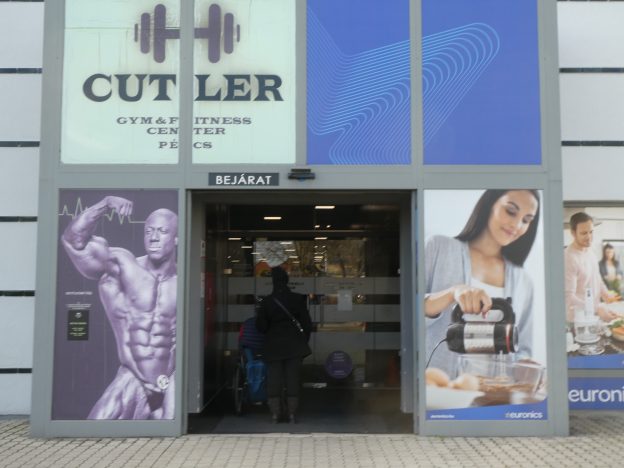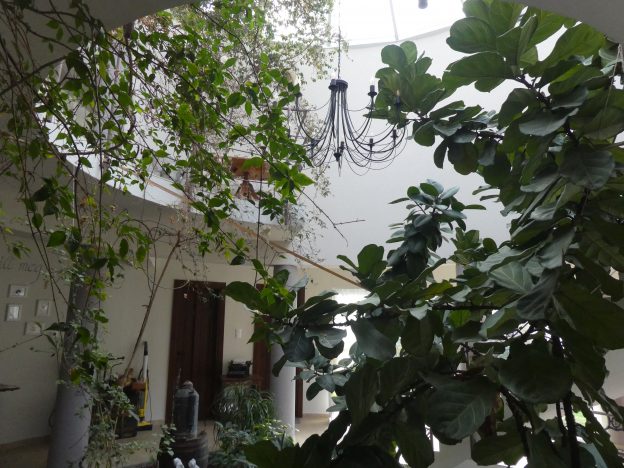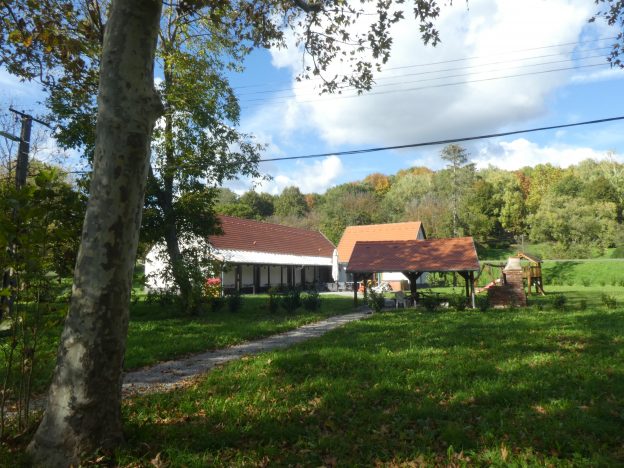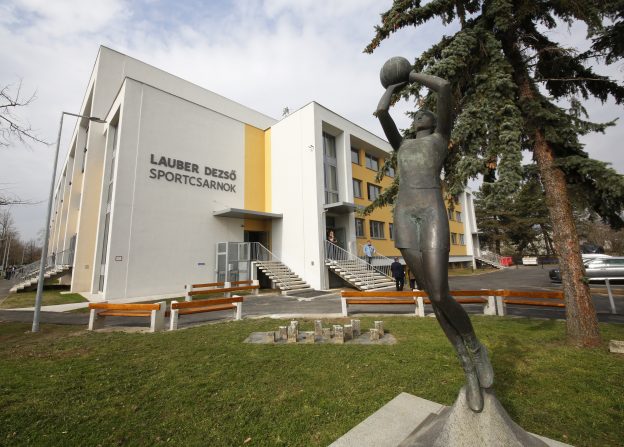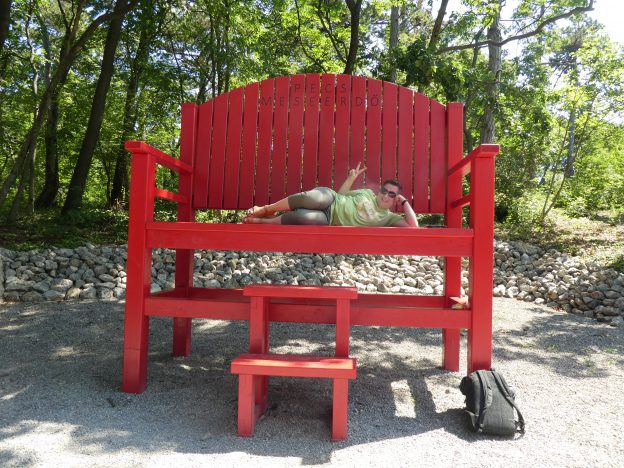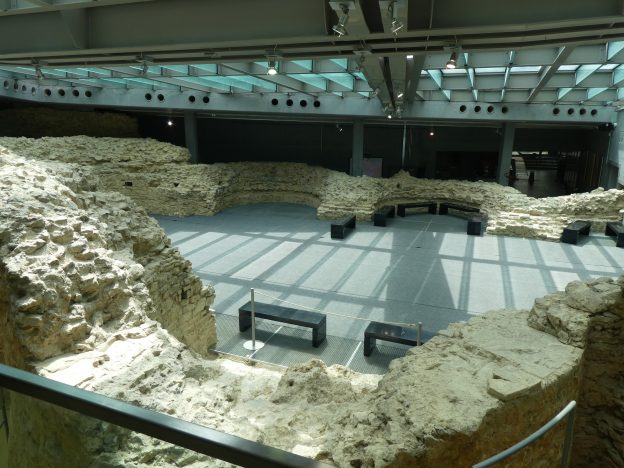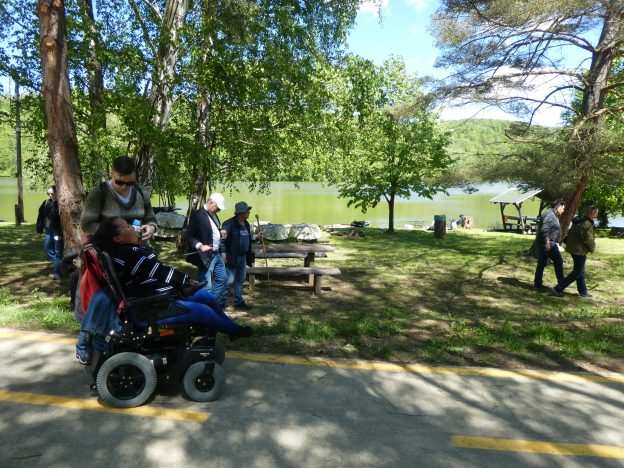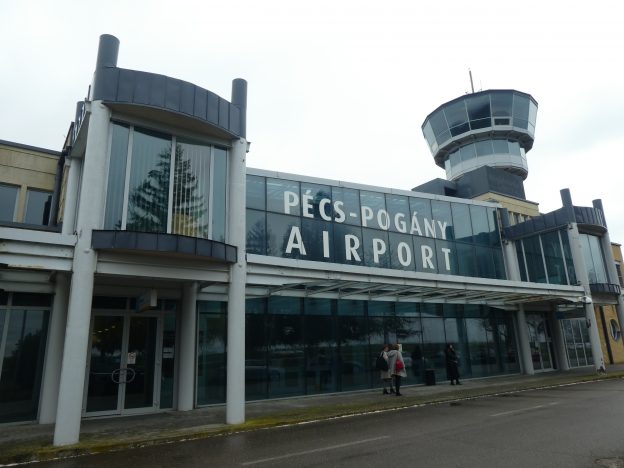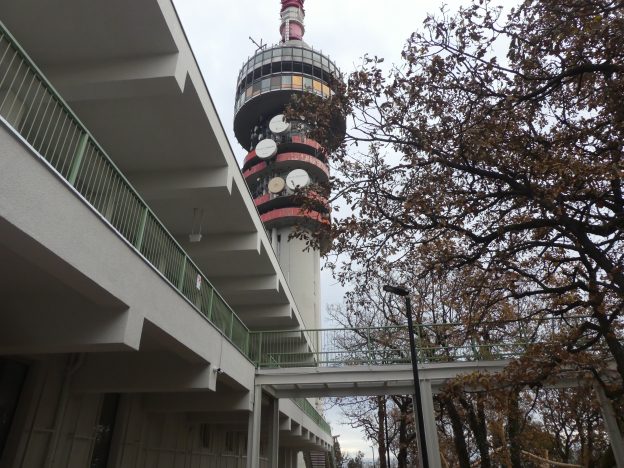The possibility of playing sports accessible is also a major contribution to independent living. In fact, as a person with a disability, exercise and strengthening is essential. Since we already know of people with disabilities who have exercised in this gym in Pécs, we have explored the Cutler Gym & Fitness in Pécs Plaza. Overall, we found that it is not a gym specifically designed for people with disabilities (such as “Suhanj” in Budapest), but it is possible to work out in an accessible way, and the approach and attitude make it definitely recommendable for people with special needs.
Cutler Gym welcomes sports lovers since December 2016 in the wing to the left of the main entrance in Pécs Plaza. When arriving at Pécs Plaza, you can access Cutler Gym from the main entrance on the left, on a smooth, paved sidewalk. There are two ways to access the entrance from the barrier-free parking lot: you can either use the barrier-free sidewalk at the main entrance of the Plaza or you can use the parking lot to reach the barrier-free sidewalk section at the entrance of Cutler.
Going straight ahead at the entrance, the glass door with vertical metal handle has no door brake, is moderately easy to open and does not swing back.
In the pleasant lobby you enter into the Protein Bar, from here you can access the sauna, the solarium, one of the changing rooms, the 900 square metre fighting area, and from the fighting area to the group room.
The seating in the Protein Bar is of appropriate height and the tables are accessible by manual wheelchair. The bar counter is slightly high from a wheelchair. The staff here are attentive and helpful.
The doors in the gym all open easily, with only a conventional handle and no door brake.
There are currently no solutions to help the visually impaired and hearing impaired.
The toilets are to the left of the entrance and are not accessible. However, accessible toilets and baby changing facilities are located in the Plaza building and are easily accessible from the gym.
Wheelchair access to the men’s and women’s changing rooms is available. Here you will find hangers, mirrors and hairdryers. Wheelchair access to the lockers in the bottom row is also available. Unfortunately the showers are not wheelchair accessible, only the hand-washing sinks can be used from a wheelchair.
From the changing room lobby, you can access the solarium on the left and the sauna on the right. These are not wheelchair accessible but can be used by other disabled people with assistance.
From the Protein Bar, a rotating entrance gate provides access to the so-called fighting area. The arms of the rotating entrance can be folded down or to the side, and the staff can make way for wheelchairs on request. There are also a number of machines in the gym to help you train. At first glance, they can seem crowded, but the staff are happy to move them if necessary and we have found that wheelchairs can fit between them. The flooring is smooth and non-slippery, and we did not encounter any risk of tripping between machines.
The group rooms open from the far end of the fighting area, with a threshold of about 1 cm, which is no problem. Here you will find mirror walls, rib walls, punching bags and a variety of other equipment.
The gym has 160 machines, more than 40 cardio machines and some 5 tonnes of weights. There are no machines specially designed for people with disabilities, but we caught the owner’s attention during our visit and hope that they will be added in the future. The majority of the machines can be used by disabled people, many with some assistance.
But the personal trainers will give you all the support you need. There are two main specially trained personal trainers (physiotherapists) who have worked and are currently working with disabled sportspeople at Cutler. Disabled guests are welcome. It is advisable to book in advance if you are a disabled person and would like to be a permanent guest in the gym, the coaches will be prepared to accommodate you.
As part of Cutler’s positive approach, the gym is not just a place to work out, the venue regularly organises events including blood donations – which are announced on the Cutler Gym Facebook page.
The Cutler offers a range of options and discounts, from day passes to annual season tickets. Unfortunately, there are no special discounts for people with disabilities.
Website:
The home page offers a visual 3D tour.
As a person with reduced mobility, it is easy to use, the menu items are clear, the size is right and the site is easy to navigate. It doesn’t take too many clicks to find the content you’re looking for.
As a visually impaired person, the website is very usable, almost exemplary. The menu system is transparent and easy to use with a screen reader. The header navigation makes it easy to quickly access specific content after opening the menu items. The navigation elements (links, buttons) are easy to activate. Unfortunately, the images are not captioned anywhere, so they are not readable for the visually impaired. But nowadays, this can be done by taking a screenshot and using artificial intelligence to interpret the images. We tried it, it works. However, taking a selfie on the registration form is more difficult as blind person. We couldn’t find an option to load a previously taken picture as a selfie, at least the screen reader doesn’t see it. Taking a selfie blind is a pretty random thing to do, there’s not really any feedback on whether you’re looking at the camera in the right direction.
Getting there:
by bus, by lines 1, 30Y, 55, get off at the “Vásártér” stop. The buses, the bus stop and the zebra crossings are barrier-free. Behind the bus stop, a cycle lane crosses the route, indicated by tactile signs.
The pavement around the building is well maintained, smooth and of adequate width.
by car, there are 4 barrier-free parking spaces in the free car park of Pécs Plaza, to the left of the main entrance on Megyeri út.

